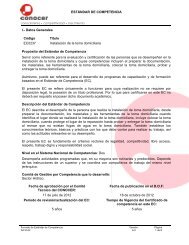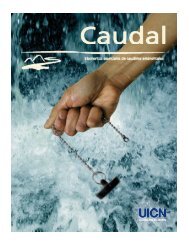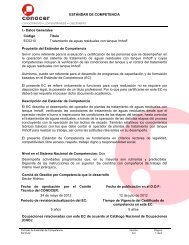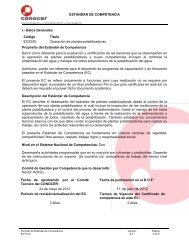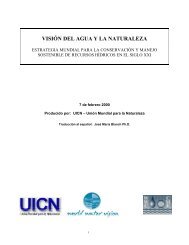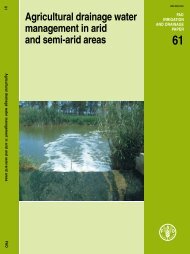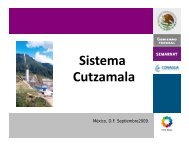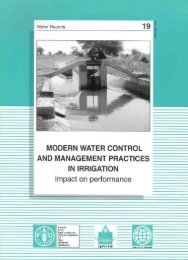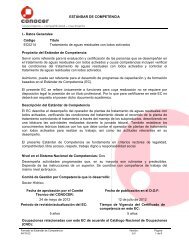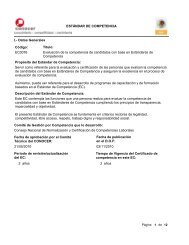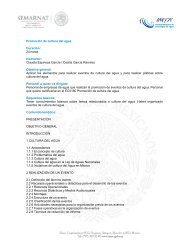Document - IUCN
Document - IUCN
Document - IUCN
Create successful ePaper yourself
Turn your PDF publications into a flip-book with our unique Google optimized e-Paper software.
Monetary resources for tank rehabilitationRECOMMENDATIONS:Needs for conservingsmall tank ecosystemsThe government of Sri Lanka, has been allocating a significant amount of resources forrehabilitation of the existing small tanks in the dry zone, since independence. This wasoccurring through the Department of Irrigation, the MASL and the Department of AgrarianServices, and was able to attract a number of foreign donors also for maintaining these tanks asa large number of households in the dry zone engage in agriculture and other economicactivities under these small tanks. However, at present those tanks are in danger due to manyreasons such as siltation, pollutants of fertilizer & chemicals, water plants, degradation ofreservations, population pressure, increased number of cattle and the high intensity ofcultivation in the catchment areas.Although the government spends lot of resources to maintain the tanks, the communities aroundthe tanks are not happy and complain about the low quality of the work and its sustainability.The main complaint is that most of the time, rehabilitation work takes place at the tank bundsand the sluice gates, but not in the tank. The communities request is, to increase the capacity ofthe tank to the level what it was 20 -25 years ago. However, the irrigation engineers ofgovernment authorities say that de-siltation is not cost effective and sustainable. It may be truethat the de-siltation of tanks is not cost effective, as far as irrigation benefits are concerned, butif all the benefits valued in this study are considered, it will be unquestionably cost effective.However, the issue on sustainability will remain as de-siltation itself does not solve the problemunless effective measures are implemented, to prevent further soil erosion in the catchments.Since these tanks which show characteristics of a common property, provide many benefits tothe region and the country, in particular to the households living around, governmentintervention in maintaining them is justifiable. Further, these tanks help the region to keep theunemployment rate low since many can find employment through tank related activities likecultivation, fishery, extraction of lotus roots & flowers etc. In addition to the environmentalservices provided, these tanks help the community to enjoy healthy life by providing nutritiousfood and water for washing & bathing.Therefore, as shown in the previous chapters, economic analysis of costs of rehabilitation andthe benefits will show the effectiveness of maintaining them properly.Moreover, tools like extended cost benefit analysis will be really necessary to compete with thelarge number of budget requisitions submitted to the National Treasury which maintains a verylimited amount of funds. In order to conduct a proper economic analysis, the officials of irrigationauthorities who prepare those proposals should be trained to value the direct and indirectservices of tanks, and how to integrate them into the proposals.Maintenance of tank reservationsFurther research is necessary to identify agricultural practices, which increase the soil erosion.A properly organized campaign of extension services is very important, to disseminate thefindings and to introduce better practices to reduce the soil erosion, which is harmful to thetanks and the yields of the cultivation. In addition, community empowerment and lawenforcement programmes should be developed to protect and maintain the reservations.The Value of Traditional Water Schemes:Small Tanks in the Kala Oya Basin, Sri Lanka63



